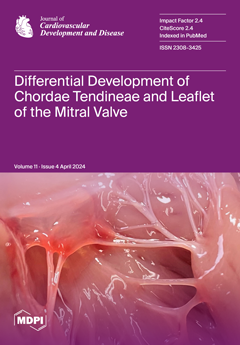The purpose of this study was to examine correlations between health indicators (age, BMI, blood pressure (BP), functional strength (FS), handgrip strength, and predicted VO
2 max) and carotid intima-media thickness (cIMT) in an active 50 years+ population. Study participants’ mean cIMT was
[...] Read more.
The purpose of this study was to examine correlations between health indicators (age, BMI, blood pressure (BP), functional strength (FS), handgrip strength, and predicted VO
2 max) and carotid intima-media thickness (cIMT) in an active 50 years+ population. Study participants’ mean cIMT was also compared to the cIMT mean of the general population. Health screenings were conducted on 1818 participants at the Huntsman World Senior Games from 2016 to 2019. Pearson’s correlations, Spearman’s correlations, and ANOVA were performed using SPSS. Weak but significant correlations were evident between cIMT and age (r = 0.283,
p < 0.001), systolic BP (r = 0.253,
p = 0.001), diastolic BP (r = 0.074,
p = 0.016), weight (r = 0.170,
p < 0.001), height (r = 0.153,
p < 0.001), handgrip L (r = 0.132,
p < 0.001), handgrip R (r = 0.074,
p < 0.029), and BMI (r = 0.07,
p = 0.029); non-significant correlations were evident with predicted VO
2 max (r = −0.035,
p = 0.382), and FS (r = −0.025,
p = 0.597). When controlling for age, systolic BP, and sex, only handgrip L (r = 0.225,
p = 0.014) was significantly correlated with cIMT. Mean cIMT for this cohort was lower across all sexes and age-matched groups (cIMT = 0.6967 mm (±0.129)). Physical activity is linked to reduced cIMT. Most health-related indicators in this study were significantly but weakly correlated with cIMT. Additional research is needed before common indicators can be used as a surrogate for cIMT and CVD risk. Results from this study can provide clinicians with additional information to reduce CVD risk through modifiable risk factors. Classic CVD risk factors such as systolic BP and BMI should be considered in patients regardless of lifestyle.
Full article






